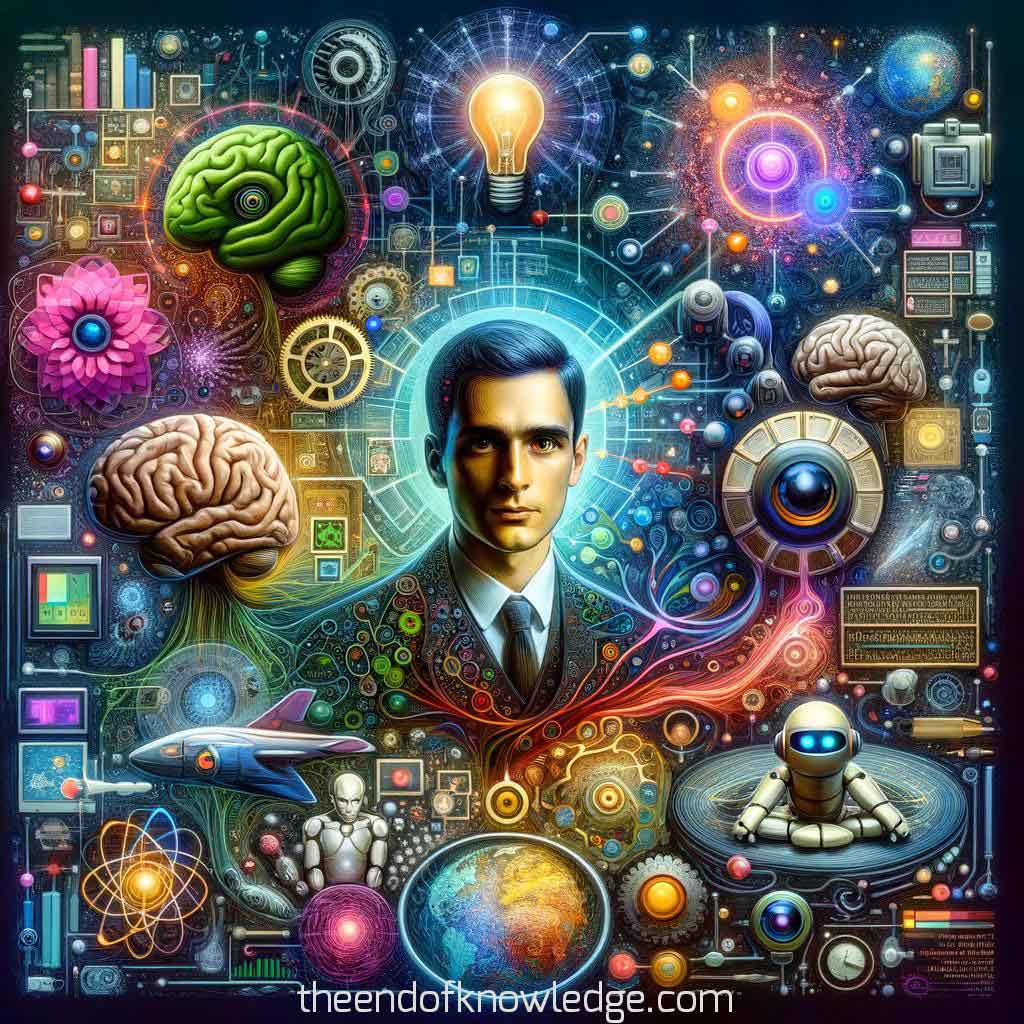 >
>
Concept Graph (using Gemini Ultra + Claude3):
Custom ChatGPT resume of the OpenAI Whisper transcription:
1.- Oriol Vinyals, a leading AI researcher at DeepMind, discusses the intersection of deep learning and artificial intelligence, focusing on varied modalities like language, images, and games.
2.- Vinyals explores the idea of AI systems potentially replacing human roles in specific tasks, like conducting interviews, and the implications of such advancements.
3.- A significant part of the discussion revolves around the human elements in AI interactions, questioning the desirability and value of completely removing the human aspect from AI conversations.
4.- The conversation touches on the development of AI agents capable of playing complex games like StarCraft, emphasizing the importance of these agents' interactions with humans.
5.- Vinyals expresses skepticism about completely replacing human elements with AI in tasks like interviewing, although he acknowledges the technical possibility within his lifetime.
6.- The discussion delves into the optimization of AI systems for engagement and excitement, considering how AI could potentially create optimally engaging content.
7.- Vinyals mentions the possibility of AI systems being used to source and generate interesting questions in conversations or interviews.
8.- There's a discussion about the significance of "excitement" as a metric in AI development, particularly in contexts like gaming and online interactions.
9.- The conversation shifts to the topic of truthfulness in AI, exploring the challenges of ensuring that AI-generated content or interactions are based on accurate information.
10.- Vinyals talks about the limitations of current AI in terms of experience and memory, noting that AI systems don't have a lifetime of experiences like humans do.
11.- The interview explores the concept of AI memory, discussing the current limitations in AI systems' ability to remember and utilize long-term context.
12.- There's a discussion about the training of AI models, particularly the approach of training from large datasets and the current inability of AI to continue learning post-deployment.
13.- Vinyals talks about the evolution of AI, highlighting the rapid advancements in the field and the increasing incorporation of basic world knowledge into AI systems.
14.- The interview delves into the topic of neural networks and how they're currently trained, noting the challenges in developing AI with experiences and memories akin to humans.
15.- Vinyals discusses the idea of not starting AI model training from scratch but building upon previous models, akin to evolutionary development in nature.
16.- The conversation touches on the challenges and potential strategies for reusing weights in neural networks, exploring the idea of building upon existing AI models.
17.- Vinyals and Fridman discuss the core principle of deep learning, which posits that a single algorithm can theoretically solve any task, given sufficient training data.
18.- The interview covers the challenges and possibilities in developing a universal algorithm for deep learning, which would require minimal customization for different tasks.
19.- Vinyals talks about the application of deep learning in various fields, from protein folding to natural language processing, highlighting the need for specific adaptations in each domain.
20.- The discussion moves to the topic of meta-learning and the idea of learning to learn, with Vinyals describing recent progress in this area, particularly in language models.
21.- Vinyals explains Gato, a DeepMind project that integrates various modalities like language, vision, and action into a single AI model, emphasizing its generalist nature.
22.- The conversation explores how Gato is trained to handle multiple tasks and modalities, discussing its architecture and the underlying neural networks.
23.- Vinyals discusses the challenges and future directions in scaling up models like Gato, considering how increasing model size might lead to more synergistic learning across different modalities.
24.- The interview touches on the concept of tokenization in AI models, explaining how it's used to process different types of data like text and images.
25.- Vinyals discusses the modularity in AI models, illustrating this with the example of Flamingo, a model that combines language and vision capabilities.
26.- The conversation explores the idea of integrating various specialized neural networks into a more comprehensive system, discussing the challenges and potential of this approach.
27.- Vinyals reflects on the evolution of meta-learning and its changing definition in the AI community, particularly in light of developments like GPT-3.
28.- The interview discusses the potential of language as a unifying element in AI, considering how converting different modalities into language could facilitate more integrated learning.
29.- Vinyals talks about the practical challenges of growing AI models, discussing the potential of reusing and expanding upon existing models.
30.- The conversation concludes with reflections on the future of AI, particularly the role of meta-learning and modularity in advancing the field towards more integrated and capable systems.
Interview byLex Fridman| Custom GPT and Knowledge Vault built byDavid Vivancos 2024